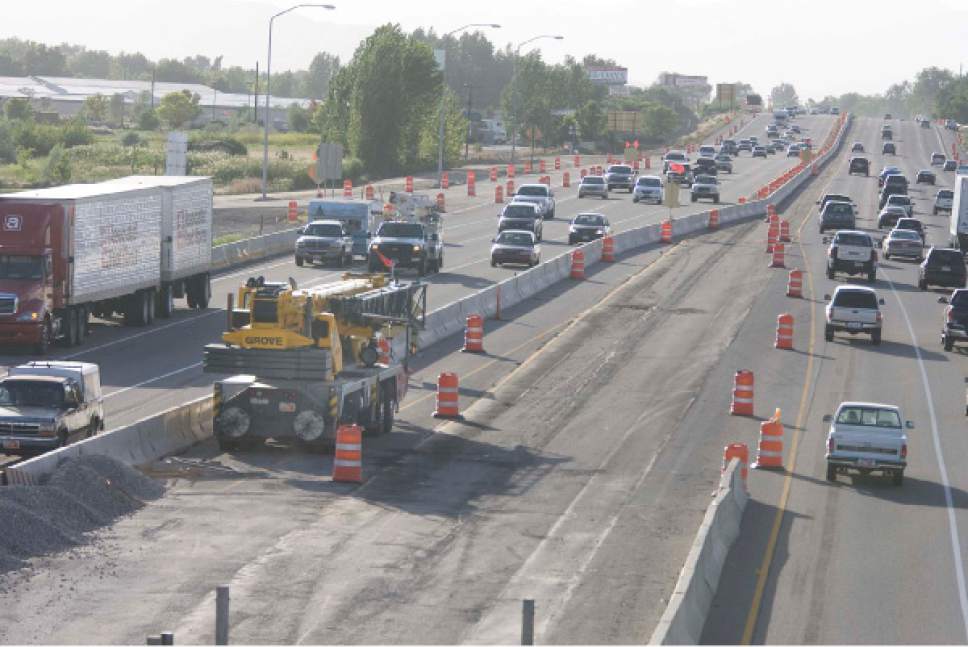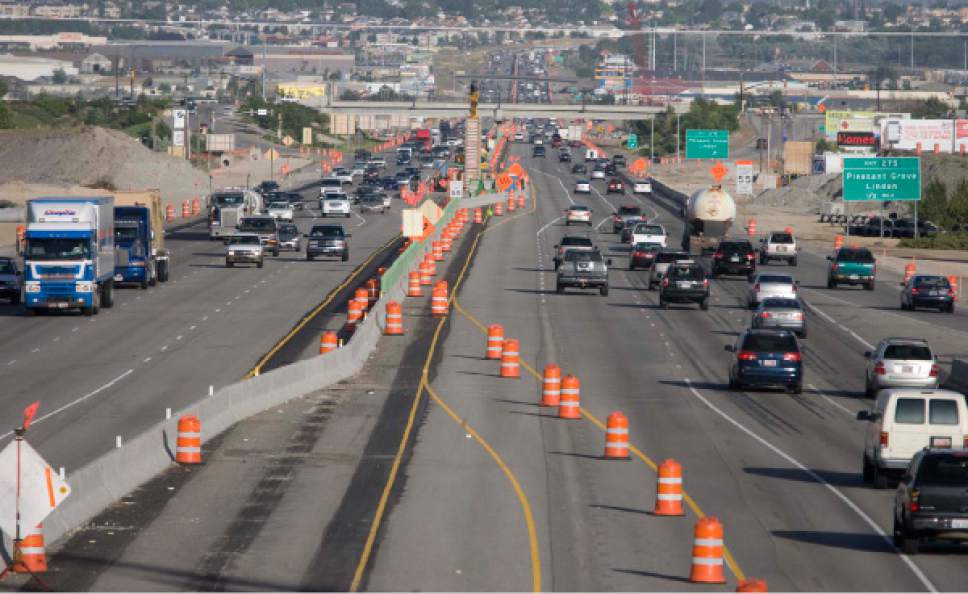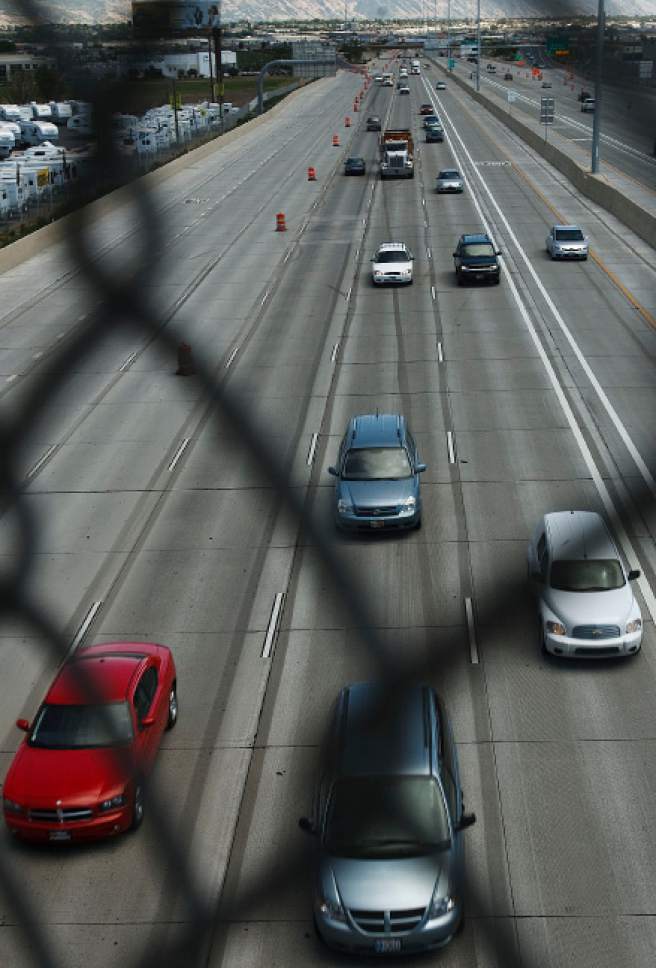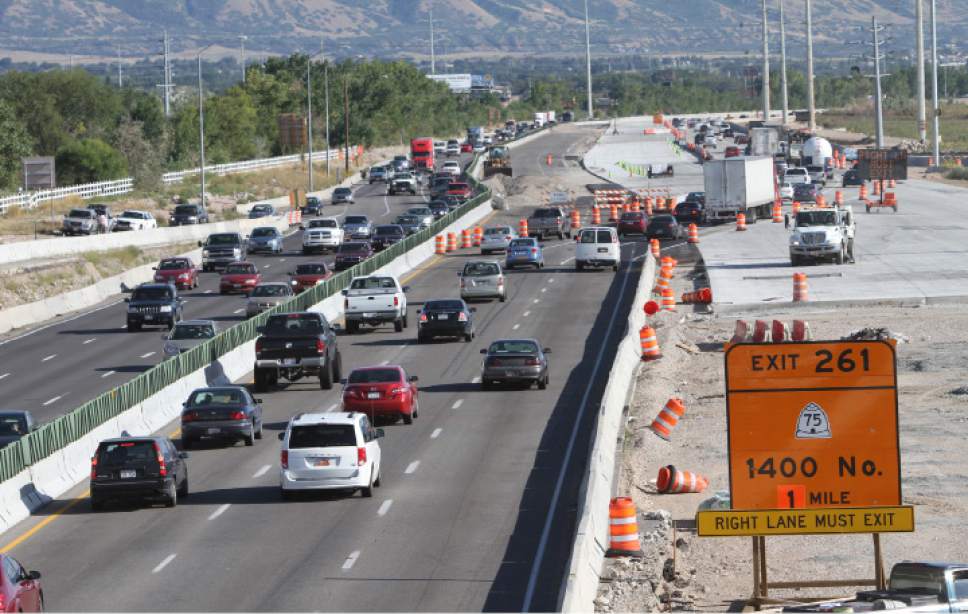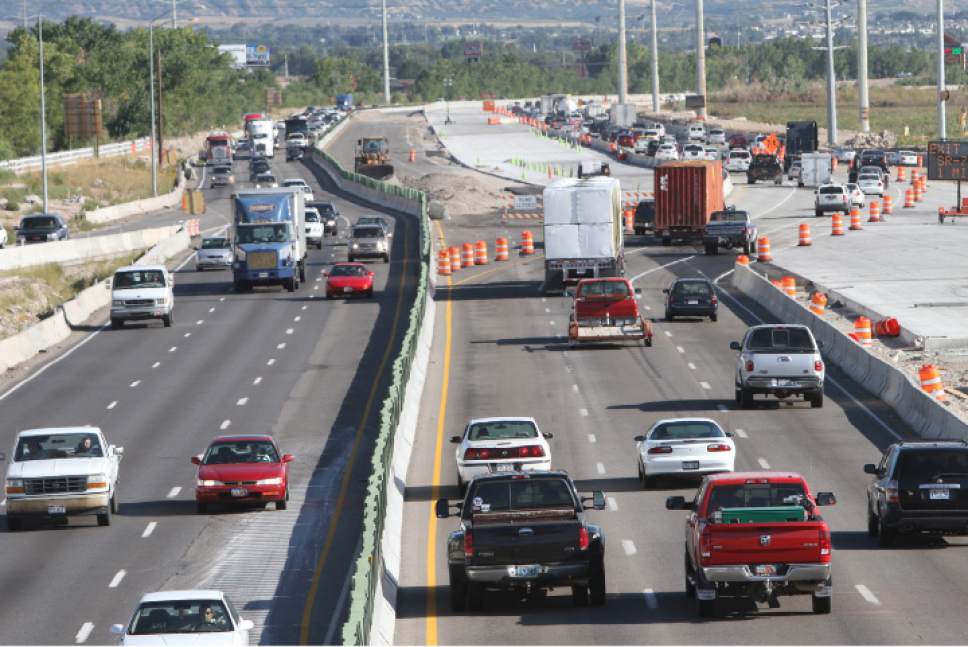This is an archived article that was published on sltrib.com in 2016, and information in the article may be outdated. It is provided only for personal research purposes and may not be reprinted.
A new study that evaluates federal data for 2013 says Utah's highway system improved far more than any other state — jumping to 13th best overall, up 16 places from a mediocre No. 29.
The Reason Foundation, a Los Angeles-based libertarian think tank that promotes "individual liberty and free markets," said in a study released Thursday that Utah rose so much because it made strides to reduce urban congestion and improve bridge conditions that year.
That is likely due to two huge projects the Utah Department of Transportation had just completed: the $1.73 billion rebuild of Interstate 15 in Utah County and the $730 million first phase of the Mountain View Corridor in western Salt Lake County.
The 24-mile project on I-15, for example, rebuilt or replaced 63 bridges and 10 interchanges — and added two traffic lanes and express carpool lanes along its length to reduce congestion.
The 15-mile Mountain View project built a new divided highway with two lanes in each direction — plus pedestrian and bike trails — at about 5700 West between 16000 South and 5400 South. It has helped reduce congestion on other roads in the western part of the county.
With the completion of such big projects, the study said Utah improved to No. 2 for the pavement condition of its urban interstates; No. 3 for the condition of other major arterials; No. 4 for condition of bridges; and No. 11 for congestion in urban areas.
The study used several other measures to rank cost-effectiveness and quality of state highway systems, including fatality rates; what percentage of highway spending goes to administrative costs; and how much is spent to maintain roads.
Other areas where Utah ranked high included No. 5 for its low fatality rate and No. 6 in the condition of its rural interstates. Areas where it ranked low included No. 46 for spending on maintenance per mile; No. 37 for total disbursements per mile; and No. 28 in administrative disbursements per mile.


